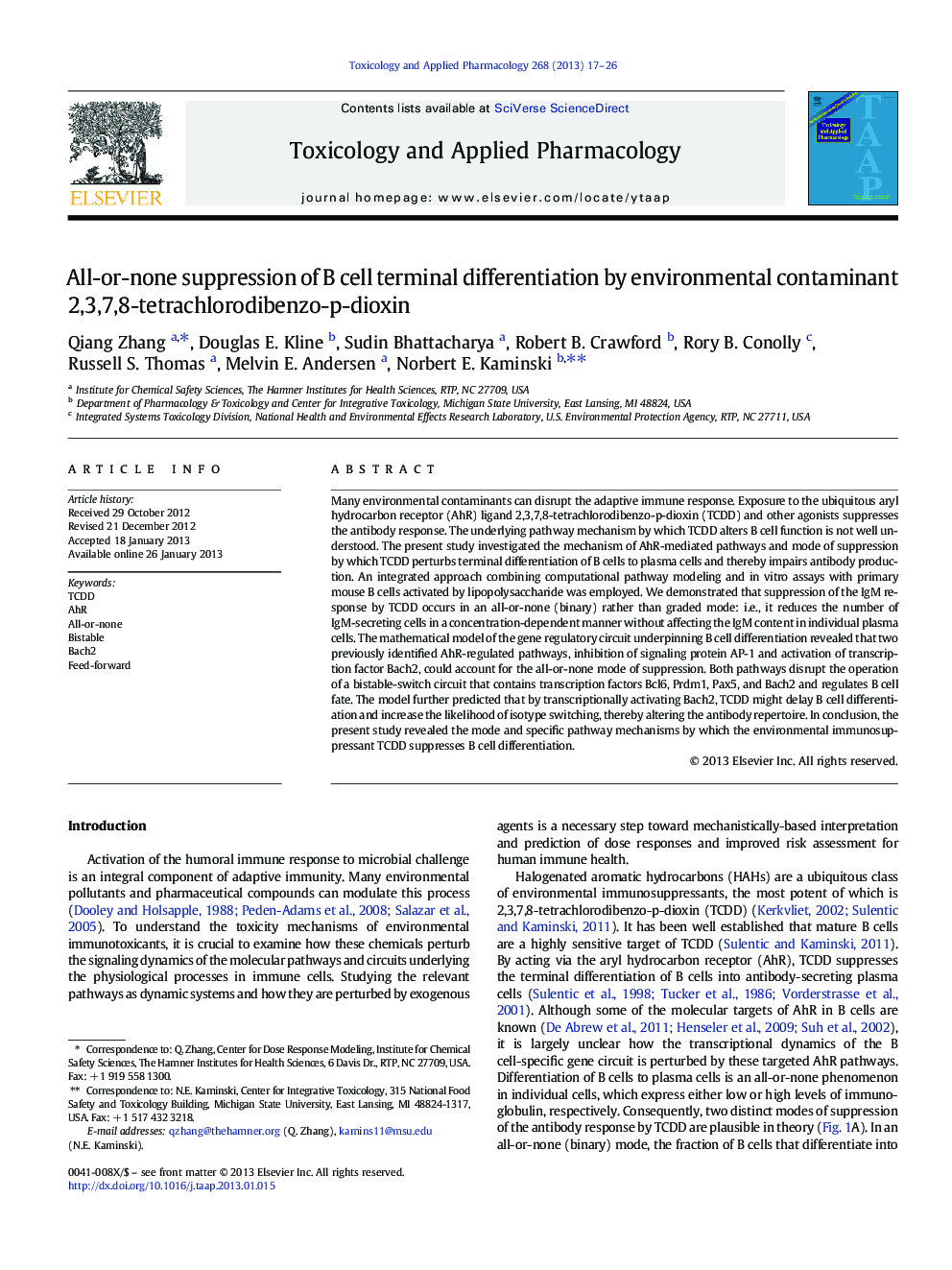| کد مقاله | کد نشریه | سال انتشار | مقاله انگلیسی | نسخه تمام متن |
|---|---|---|---|---|
| 5846620 | 1128493 | 2013 | 10 صفحه PDF | دانلود رایگان |

Many environmental contaminants can disrupt the adaptive immune response. Exposure to the ubiquitous aryl hydrocarbon receptor (AhR) ligand 2,3,7,8-tetrachlorodibenzo-p-dioxin (TCDD) and other agonists suppresses the antibody response. The underlying pathway mechanism by which TCDD alters B cell function is not well understood. The present study investigated the mechanism of AhR-mediated pathways and mode of suppression by which TCDD perturbs terminal differentiation of B cells to plasma cells and thereby impairs antibody production. An integrated approach combining computational pathway modeling and in vitro assays with primary mouse B cells activated by lipopolysaccharide was employed. We demonstrated that suppression of the IgM response by TCDD occurs in an all-or-none (binary) rather than graded mode: i.e., it reduces the number of IgM-secreting cells in a concentration-dependent manner without affecting the IgM content in individual plasma cells. The mathematical model of the gene regulatory circuit underpinning B cell differentiation revealed that two previously identified AhR-regulated pathways, inhibition of signaling protein AP-1 and activation of transcription factor Bach2, could account for the all-or-none mode of suppression. Both pathways disrupt the operation of a bistable-switch circuit that contains transcription factors Bcl6, Prdm1, Pax5, and Bach2 and regulates B cell fate. The model further predicted that by transcriptionally activating Bach2, TCDD might delay B cell differentiation and increase the likelihood of isotype switching, thereby altering the antibody repertoire. In conclusion, the present study revealed the mode and specific pathway mechanisms by which the environmental immunosuppressant TCDD suppresses B cell differentiation.
⺠TCDD suppresses B cell differentiation stimulated by LPS in an all-or-none mode. ⺠TCDD reduces the fraction of IgM-secreting cells, not the IgM level in those cells. ⺠A mathematical model indicates deregulation of AP-1 and Bach2 by AhR is involved. ⺠Both pathways interfere with the bistable switch underlying B cell differentiation. ⺠Disruption of the bistable switch leads to all-or-none mode of suppression.
Journal: Toxicology and Applied Pharmacology - Volume 268, Issue 1, 1 April 2013, Pages 17-26